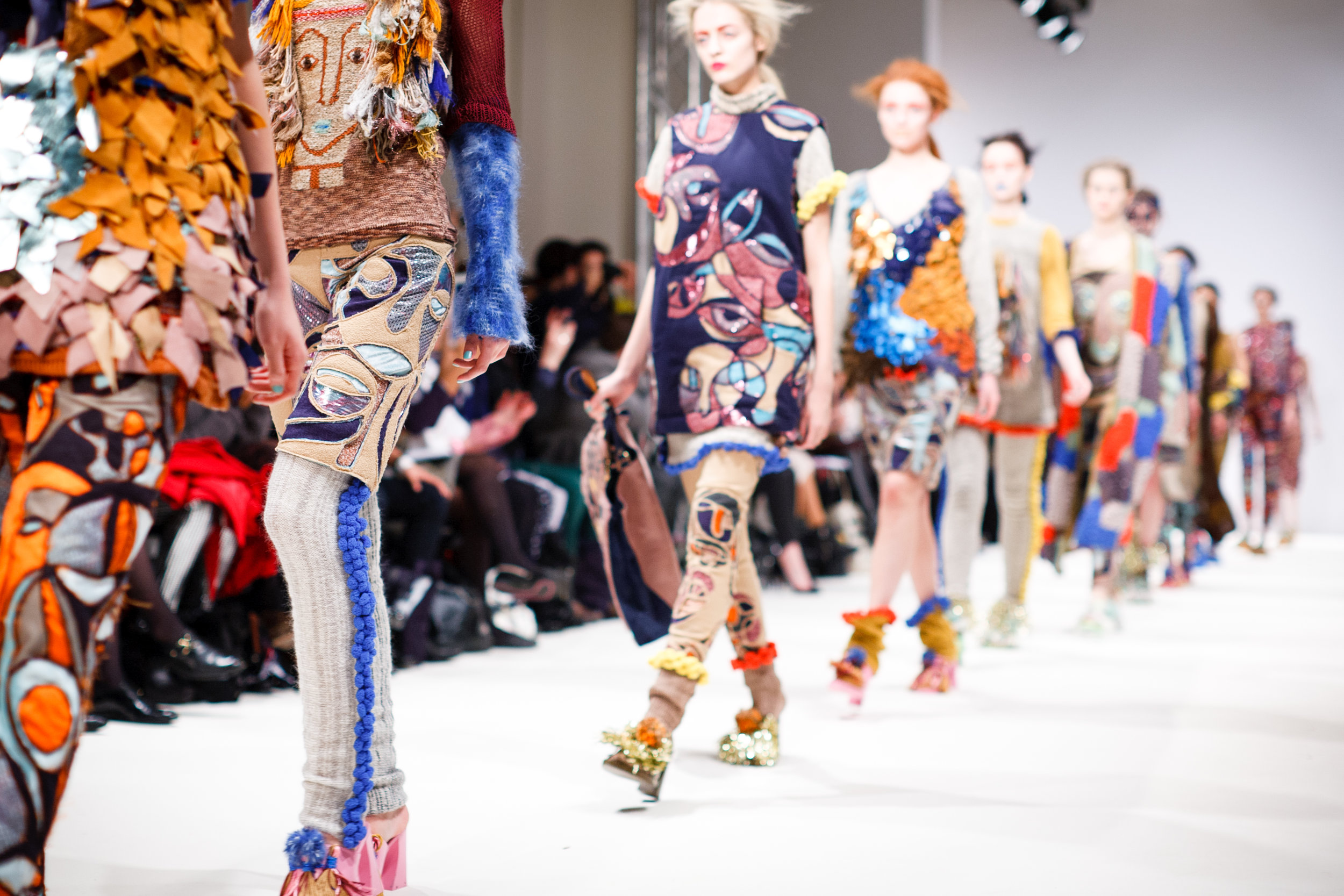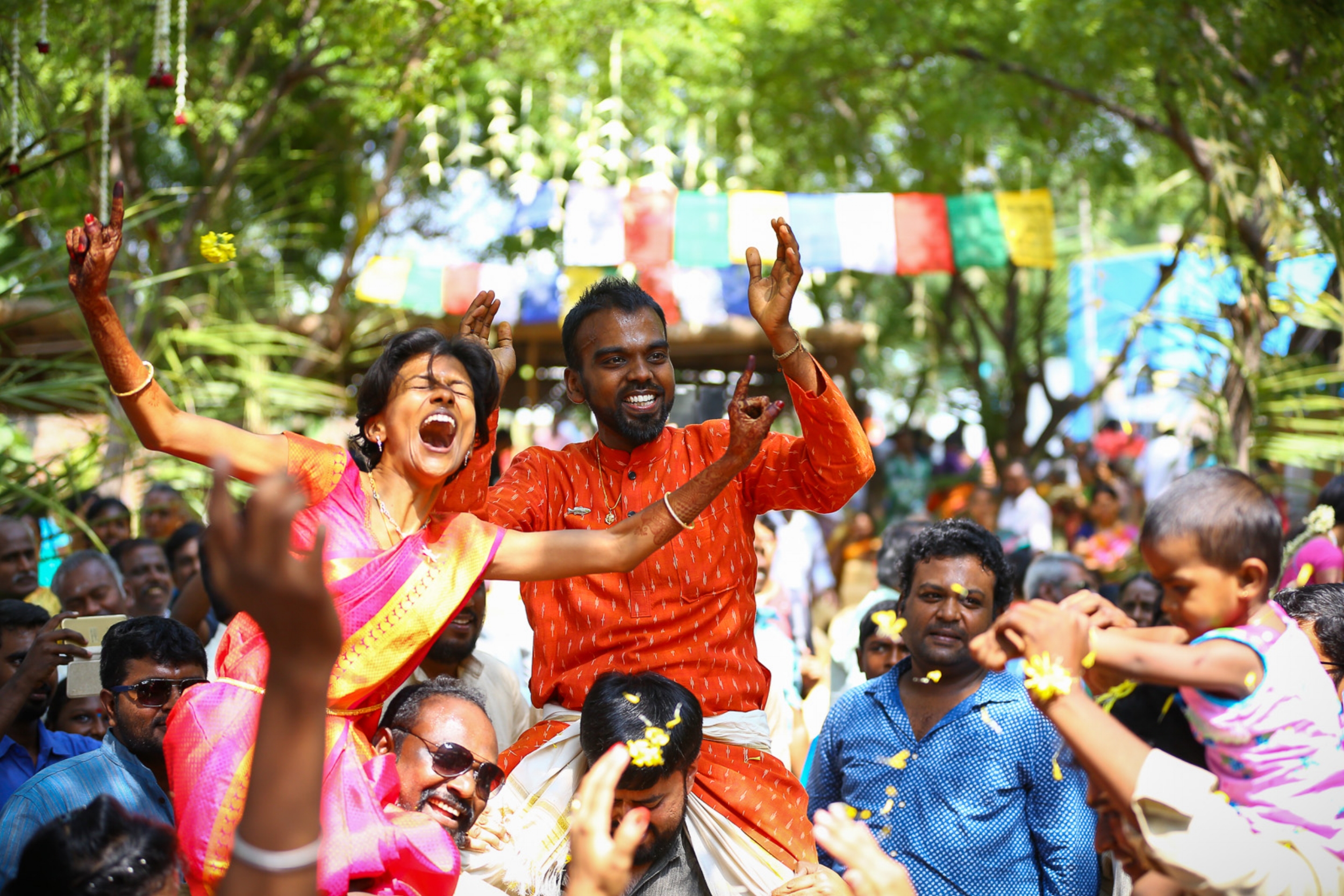Fashion Reincarnated: How Upcycling Is Giving Fashion A New Life

One Sunday evening, while negotiating the crowd of shoppers in the newly opened H&M in a Bengaluru mall, I couldn't help but observe the heaps of garments piling up in shopping baskets and bags. As I browsed through the racks of clothing, I started to think more consciously for the first time as to what will be the fate of these garments once they disintegrate or are no longer deemed fashionable?
The afterlife of fashion is extremely necessary to consider given that the fashion and textiles industry is considered the second most polluting one in the world after that of oil. Every stage in a garment’s life threatens the Earth and its resources in addition to the enormous amounts of waste it generates. For example, it can take more than 20,000 litres of water to produce one kilo of cotton which would be equivalent to a pair of jeans and T-shirt; up to 8,000 litres of chemicals are used to turn raw materials into clothes, resulting in highly dangerous implications for their introduction into the water supply chain. Fast fashion is particularly culpable in this regard what with the use of synthetic, oil-based fibres and a rapid turnover rate.
‘Is Green the New Black?” Forbes magazine questioned some time ago. Sustainable fashion nowadays is gaining more and more currency with each passing day as companies, brands, and individuals are focusing on pursuing a design philosophy which headlines sustainability, responsibly using resources and that creates reduced human impact upon the environment. It also includes minimal waste in the production process and also takes into account of ensuring safe, clean, working conditions for workers as well as fair wages. Measures such as upcycling, re-using, and creating a garment in such a way that it can be reassembled after being discarded are also crucial aspects of sustainable fashion.
Fairtrade India's ‘Show Your Label’ campaign aimed at getting consumers to question where, how and by whom their garments are made Image: Fairtrade India
How does sustainable fashion figure in the textile dialogue in India?
While an Indian Consumer Survey indicated last year that that India is set to become the biggest market for sustainable fashion by 2030, it is also worth focusing on the fact that India is also potentially a huge hub for ethical fashion, being one of the few countries where traditional techniques of dyeing, weaving, stitching, and embroidery are prevalent. Yet, what with aspirations to modernity and swearing by branded labels, handicrafts are often considered to be qualitatively inferior.
Lakmé India Fashion Week Summer/Resort 2017 held in February this year dedicated its second day to Sustainable Fashion and Indian textiles, displaying several brands who are creating a new vocabulary for sustainable fashion narratives in the country; the show aptly titled Reincarnations focused on the various ways fashion can acquire a new life through repurposing, reusing, and recycling. We spoke to a few designers who participated to learn about how they gravitated towards pursuing a sustainable fashion model, particularly as to how they incorporated upcycling as part of their designs.
Day 2 of Lakmé India Fashion Week 2017 showcased sustainable fashion, upycyled and recycled outfit. Image: Lakmé India Fashion Week/ Facebook
Sustainable fashion is more than just a concept
A self-taught designer and the brainchild behind the upcycled footwear brand Kurio, Mumbai-based Megha Rawat says that sustainable fashion is not just a concept, it’s a habit for her. She was already painting old shoes and repurposing badges and brooches as a child. “I never let my mother throw away anything, I would always abstract something out of them,” she reminisces. As she migrated from one technological job to another, she began toying with the idea of becoming an entrepreneur; Rawat then began Kurio almost two years ago. “We did not take a single thing that was used firsthand while creating the shoes,” she says, pointing out that old discarded tyres became the rubber soles while used silk saris formed the uppers of the shoes.
Rawat says that while there are many who appreciate the world of sustainable fashion, the market for sustainable fashion goods is still limited. "The consumers ultimately end up buying from Zara,” she says, indicating the inclination for fast fashions. Consumers also express concern about the context in which old saris have been worn or used, for example:“What caste wore it? What circumstances were they used in?” Rawat supervises the footwear which are entirely handcrafted in workshops in Mumbai. “It’s very challenging and time-consuming to craft them using the materials that we do, its hard and tough unlike leather,” she says, commenting that it takes more than two weeks for 40-60 pairs to be made. Given that ensuring fair wages to the artisans is an elemental aspect of sustainable fashion, Rawat says that it is crucial for her to do so as they remain connected to her and the brand. “They are a big inspiration to me and the lines give them a big visibility window as well,” she says.
Describing herself as a wanderer, Gaury Kirtikar Pathare was a photographer who would often collect natural stones during her journeys to places such as Spiti, Sangla Valley, Dharamshala, Hampi, Masinagudi and Khajjiyar. “I liked their shapes, each was so unique, a far cry from identikit products we saw churned out from machines these days,” she said. When she embarked upon creating jewellery for her label, Wandering Whites, she pondered about what would make for interesting companions to her stones. “I have never liked going down conventional routes and this was no exception. It was then I thought of the scrapyards in Mumbai and the junk that I would encounter there,” she says, mentioning that the junk such as air-conditioning coils, bolts, and gas burners too were unique in shape and size and beauty in themselves. “They stood out on their own as well as having a story of being part of something else.” The fact that they were abstracted from copper and brass was also something that drew her to them as she was searching for an organic material which would add contrast and fusion to her works. “I wanted to primarily focus on reusing the object itself rather than melting it down. Why waste it?” she asks and in the process created bold, unusual statement-making pieces.
Rana Plaza, the worst disaster in the history of the garment industry, which killed 1,134 people was a wake-up call for the global fashion industry
As with the above examples, the lifestyle brand, I Was A Sari explored the metamorphosis of a sari into upcycled textile and fashion products (textile jewellery, bags, scarves, and wraps), subsequently reinterpreting the sari; it also significantly focused on providing recurring employment opportunities to economically disadvantaged Indian women by equipping them with a specific skill-set in conjunction with a group of Mumbai based NGOS. The saris meanwhile are sourced from the used sari trade in Mumbai.
The enterprise took birth in late 2012, when Mumbai-based Italian social changemaker, Stefano Funari approached Paola Bertola of Fashion in Process, a research lab at Design Department of Politechnico di Milano University and pitched a possible collaboration involving the sari and upcycling. Paola and her team of designers eventually came up with sari products using simple tailoring techniques that not only reinvented the garment but also imbued it with global resonance. In April 2013, three designers from Fashion in Process came down to Mumbai to conduct a week long training program for 20 underprivileged women; the initiative now hires 50 artisans and sold 20,000 handcrafted items last year.
I wanted to primarily focus on re-using the object itself rather than melting it down. Why waste it?
“Sustainable fashion is trendy now internationally, it is a topic with big appeal. Established brands like H&M, for example, they all try to subscribe to it,” says Funari, the founder and CEO of I Was A Sari, adding that consumers in turn are also becoming increasingly intrigued about it. However, in context of India and whatever he has experienced so far, he mentions that it is a very aspirational society. “The fact that you can show off that you are wearing or showcasing a brand, whether it is the car you drive or the watch you wear is very important,” he says. “ You don't want to wear or upcycle; the middle class in fact is trying to move away from the traditional upcycled products, which were earlier made out of economic necessity.”
Funari also speaks about how using the sari in this context makes the consumers question its origins. “The sari is an intimate garment, it touches your body, it is like skin. One of my most successful collections consisted of wraparound sarongs – it was not so successful in India because you have to wrap yourself with it,” he says. Echoing what Rawat of Kurio says, the consumer in this case also questions the cultural dynamics of the sari: who wore the sari? Was it the same caste or a lower one? “Such line of thought would absolutely not be the case in western countries, where the primary question would be – is the garment clean or not?” Funari points out along with the dramatic allure of vintage garments being laden with stories.
Hidden in the price tags of our clothes are high human and environmental costs. Image: Youtube screengrab
Funari mentions that while 90 percent of I I Was A Sari's products are sold abroad, items such as bags, necklaces, and accessories do sell in India though. “We are very happy it's picking up. Our clients are sort of young, open minded progressive Indians, not weighed down by traditional mindsets,” he says, describing them as having been abroad and familiar with the idea of and appreciating the importance of upcycling. “There is interest but there is a long way to go before sustainable fashion is a widely accepted and practiced concept,” he concludes.
Giving new context and purpose to discarded fashion is as necessary as recognising the perils of fast fashion; becoming much more mindful consumers will certainly contribute towards addressing and minimising to some degree the damage caused by fashion and textile industries.
Priyanka Sacheti is an independent writer based in Bangalore. She has been published in numerous publications with a special focus on art, gender, diaspora, and identity and currently an editor at Mashallah News. An author of three poetry volumes, she's currently working on a novella. She also explores the intersection of her writing and photography on her blog, http://iamjustavisualperson.blogspot.com/ and instagram: @iamjustavisualperson.









